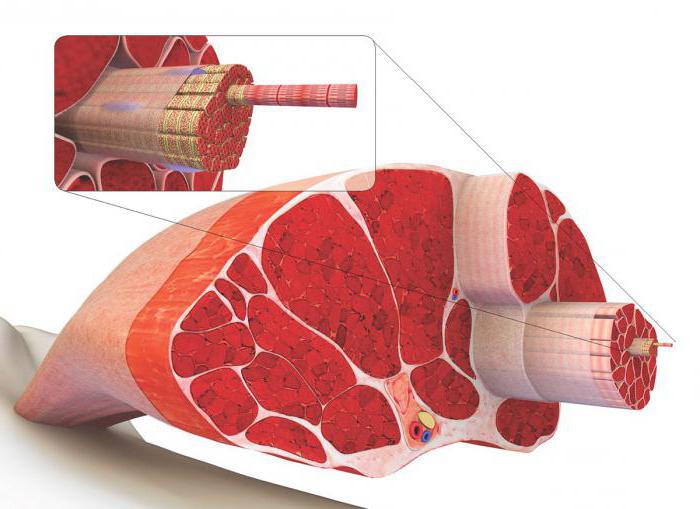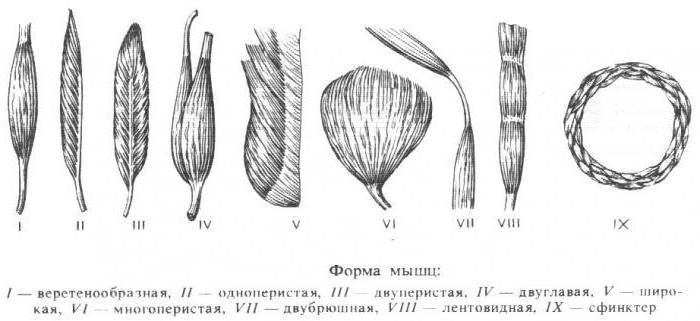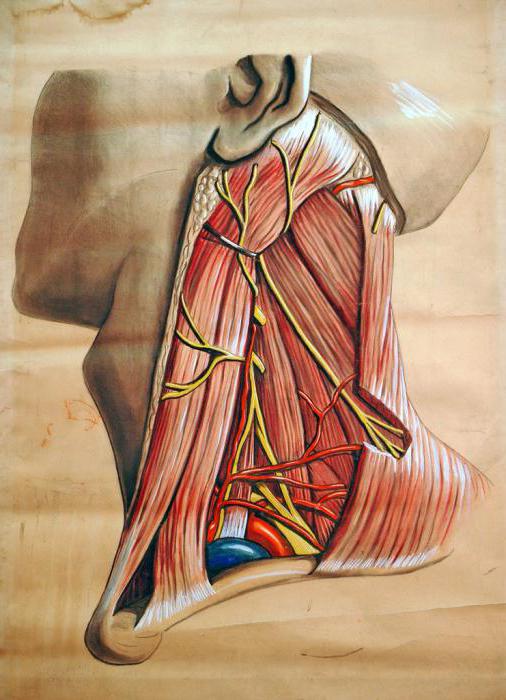It is recognized as the dominant tissue of the human body, the share of which in the total weight of a person is up to 45% in men and up to 30% in the fair sex. Musculature includes a variety of muscles. There are more than six hundred types of muscles.
The importance of muscles in the body
Muscles play an extremely important role in any living organism. With their help, the musculoskeletal system is set in motion. Thanks to the work of muscles, a person, like other living organisms, can not only walk, stand, run, make any movement, but also breathe, chew and process food, and even the most important organ - the heart - also consists of muscle tissue.
How are muscles worked?
The functioning of muscles occurs due to the following properties:
- Excitability is an activation process manifested as a response to a stimulus (usually an external factor). The property manifests itself in the form of a change in the metabolism in the muscle and its membrane.
- Conductivity is a property that means the ability of muscle tissue to transmit a nerve impulse formed as a result of exposure to an irritant from a muscle organ to the spinal cord and brain, as well as in the opposite direction.
- Contractility - the final action of the muscles in response to a stimulating factor, manifests itself in the form of shortening of the muscle fiber, the tone of the muscles also changes, that is, the degree of their tension. At the same time, the rate of contraction and the maximum tension of the muscles can be different as a result of the different influence of the stimulus.
It should be noted that muscle work is possible due to the alternation of the above properties, most often in the following order: excitability-conductivity-contractility. If we are talking about voluntary work of the muscles and the impulse comes from the central nervous system, then the algorithm will look like conduction-excitability-contractility.
Muscle structure
Any human muscle consists of a set of oblong cells acting in the same direction, called a muscle bundle. The bundles, in turn, contain muscle cells up to 20 cm long, also called fibers. The shape of the cells of the striated muscles is oblong, smooth - fusiform.

A muscle fiber is an elongated cell bounded by an outer shell. Under the shell, parallel to each other, protein fibers capable of contracting are located: actin (light and thin) and myosin (dark, thick). In the peripheral part of the cell (near the striated muscles) there are several nuclei. Smooth muscles have only one nucleus, it is located in the center of the cell.
Classification of muscles according to various criteria
The presence of various characteristics that are different for certain muscles allows them to be conditionally grouped according to a unifying feature. To date, anatomy does not have a single classification by which human muscles could be grouped. Muscle types, however, can be classified according to various criteria, namely:
- In shape and length.
- According to the functions performed.
- In relation to the joints.
- By localization in the body.
- By belonging to certain parts of the body.
- According to the location of the muscle bundles.
Along with the types of muscles, three main muscle groups are distinguished depending on the physiological features of the structure:
- Striated skeletal muscles.
- Smooth muscles that make up the structure of internal organs and blood vessels.
- heart fibres.

The same muscle can simultaneously belong to several groups and types listed above, since it can contain several cross-signs at once: shape, functions, relation to a body part, etc.
Shape and size of muscle bundles
Despite the relatively similar structure of all muscle fibers, they can be of different sizes and shapes. Thus, the classification of muscles according to this feature distinguishes:
- Short muscles move small parts of the human musculoskeletal system and, as a rule, are located in the deep layers of the muscles. An example is the intervertebral spinal muscles.
- Long ones, on the contrary, are localized on those parts of the body that make large amplitudes of movements, for example, limbs (arms, legs).
- Wide ones cover mainly the torso (on the stomach, back, sternum). They can have different directions of muscle fibers, thereby providing a variety of contractile movements.
Various forms of muscles are also found in the human body: round (sphincters), straight, square, rhomboid, fusiform, trapezoid, deltoid, serrated, one- and two-pinnate and muscle fibers of other shapes.

Varieties of muscles according to their functions
Human skeletal muscles can perform various functions: flexion, extension, adduction, abduction, rotation. Based on this feature, the muscles can be conditionally grouped as follows:
- Extensors.
- Flexors.
- Leading.
- Discharging.
- Rotational.
The first two groups are always on the same part of the body, but on opposite sides in such a way that when the first contract, the second relax, and vice versa. The flexor and extensor muscles move the limbs and are antagonist muscles. For example, the biceps brachii muscle flexes the arm, while the triceps extends it. If, as a result of the work of the muscles, a part of the body or an organ moves towards the body, these muscles are adductors, if in the opposite direction, they are abducting. The rotators provide circular movements of the neck, lower back, head, while the rotators are divided into two subspecies: pronators, which move inward, and arch supports, which provide movement to the outside.
In relation to the joints
The musculature is attached with the help of tendons to the joints, setting them in motion. Depending on the attachment option and the number of joints that the muscles act on, they are: single-joint and multi-joint. Thus, if the musculature is attached to only one joint, then it is a single-joint muscle, if to two, it is bi-articular, and if there are more joints, it is multi-joint (flexors / extensors of the fingers).
As a rule, single-articular muscle bundles are longer than multi-articular ones. They provide a more complete range of motion of the joint relative to its axis, since they spend their contractility on only one joint, while polyarticular muscles distribute their contractility over two joints. The latter types of muscles are shorter and can provide much less mobility while simultaneously moving the joints to which they are attached. Another property of multi-joint muscles is called passive insufficiency. It can be observed when, under the influence of external factors, the muscle is completely stretched, after which it does not continue to move, but, on the contrary, slows down.
Localization of muscles
Muscle bundles can be located in the subcutaneous layer, forming superficial muscle groups, and maybe in deeper layers - these include deep muscle fibers. For example, the musculature of the neck consists of superficial and deep fibers, some of which are responsible for the movements of the cervical region, while others pull the skin of the neck, the adjacent area of the skin of the chest, and also participate in turning and tipping the head. Depending on the location in relation to a particular organ, there can be internal and external muscles (external and internal muscles of the neck, abdomen).

Types of muscles by body parts
In relation to parts of the body, the muscles are divided into the following types:
- The muscles of the head are divided into two groups: chewing, responsible for the mechanical grinding of food, and facial muscles - types of muscles, through which a person expresses his emotions, mood.
- The muscles of the body are divided into anatomical sections: cervical, pectoral (large sternal, trapezius, sternoclavicular), dorsal (rhomboid, latissimus dorsalis, large round), abdominal (internal and external abdominal, including the press and diaphragm).
- Muscles of the upper and lower extremities: shoulder (deltoid, triceps, biceps brachialis), elbow flexors and extensors, gastrocnemius (soleus), tibia, foot muscles.
Varieties of muscles according to the location of muscle bundles
Muscle anatomy in different species may differ in the location of muscle bundles. In this regard, muscle fibers such as:
- Cirrus resemble the structure of a bird's feather, in which the muscle bundles are attached to the tendons on only one side, and the other diverge. The pinnate form of the arrangement of muscle bundles is characteristic of the so-called strong muscles. The place of their attachment to the periosteum is quite extensive. As a rule, they are short and can develop great strength and endurance, while muscle tone will not be very large.
- Muscles with parallel arrangement of bundles are also called dexterous. Compared to feathery, they are longer, while less hardy, but they can perform more delicate work. When reduced, the voltage in them increases significantly, which significantly reduces their endurance.
Muscle groups by structural features
Accumulations of muscle fibers form whole tissues, the structural features of which determine their conditional division into three groups:

